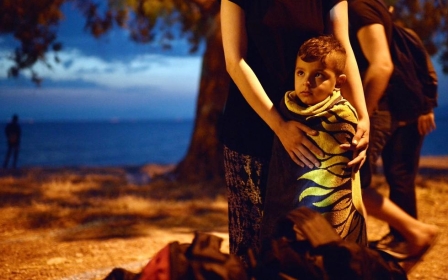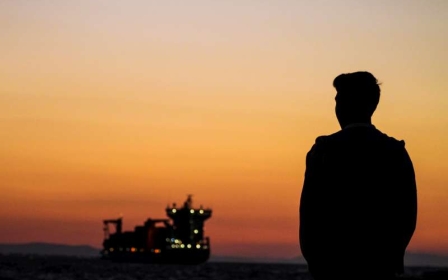EU must open safe legal routes to Europe to solve the refugee crisis

On 20 July the European Council under the new Luxembourg Presidency agreed on a draft decision establishing a temporary and exceptional relocation mechanism (“sharing the burden”) from “frontline states”, Italy and Greece, to other member states of persons in clear need of international protection (i.e. Syrians and Eritreans).
European Union member states have only agreed to the relocation of 32,256 refugees instead of 40,000 as previously envisaged. This demonstrates that solidarity between states is a concept that only exists in Article 80 of the Treaty and not in practice. On the other hand, a lack of willingness to offer assistance to asylum seekers has become a defining feature of common “European-ess”, with ethnic boundaries drawn on the basis of exclusion of the brown and black Other.
Recent months have seen a plethora of badly drafted and rather ad hoc responses to increasing number of people who die in the Mediterranean when trying to reach safety in Europe. The crisis, categorised from its very onset as a “migrant crisis” rather than a “refugee crisis”, even though 50 percent of those boarding the boats are Syrians and Eritreans who tend to be granted asylum in Europe at rates as high as 90 percent, is far from over: as summer continues and the sea is calm, more people are bound to risk their lives in search of a better life.
By referring to them as “migrants”, Europe justifies its overwhelmingly military response and skilfully exploits the grey-area that exists in between the right to seek asylum in Article 14 of the Universal Declaration of Human Rights and the principle of non-refoulement as stated in Article 33 of the 1951 Refugee Convention.
On 27 May the European Commission presented its first implementation package including, among others, a proposal to trigger an emergency relocation of 40,000 persons “in clear need of international protection” from Italy and Greece based on Article 78(3) of the Treaty on the Functioning of the European Union (TFEU), and a recommendation proposing an EU-wide resettlement scheme to offer 20,000 places to refugees outside of the EU.
On 25 June, the European Council concluded that member states should agree by consensus on the distribution of such persons, on the basis of the population of the country, its GDP, the number of asylum applications registered and the number of refugees resettled over the period 2010-2014 and the unemployment rate.
On 9 July, member states agreed on the resettlement of 20,000 persons in the EU, a figure which already has been exceeded.
By contrast, concerning the relocation of 40,000 asylum seekers, the Ministers could not reach an agreement. The so called “burden sharing” was further discussed on 20 July when the Home affairs ministers debated the implementation package of the European Agenda on Migration which was drafted in May. The Council will formally adopt the decision once the European Parliament gives its opinion, which is expected in September. It is worth pointing out that the decisions of the Council are not binding and can be taken up by member states voluntarily, whilst the Commissions’ proposals are mandatory.
UNHCR has urged the Luxembourg and Netherlands Presidencies to lead the implementation of the European Agenda on Migration, in particular focusing on measures to ensure adequate reception conditions for those rescued; the establishment of an effective response mechanism for member states, including relocation; the proposed EU-wide resettlement project as well as other legal alternatives to dangerous sea crossings; and addressing root causes of forced displacement.
The relocation programme remains the most contentious one. Here we witness not only a complete lack of political imagination and leadership, but also lack of common sense. In practice, only 3 percent of asylum seekers are sent back to the first European country that they entered (e.g. those who come to Italy by boat and manage to get to Germany are usually allowed to stay there). Those people who have family links or historical, linguistic and other connections to particular member states should be allowed to move to those countries.
On the other hand, it is obvious that people will not stay in countries such as Malta or Greece where there is no infrastructure, no opportunities, and most importantly, no political will on the side of those host societies, for them to rebuild their lives. In that case, reception conditions should be improved, and integration programmes should be drafted. Only then migrants and refugees may decide to stay there.
Furthermore, the idea of looking at the root causes of forced migration – which would for instance imply Europe taking responsibility for its failed foreign policies - has been replaced by politically dangerous and simply impractical proposals of creating Frontex and European Asylum Support Office (EASO) “hotspots” in unstable countries known for its poor human rights record, such as Niger.
Those “hotspots” are envisaged as short term holding facilities which would enable quick removals of those deemed unworthy of protection. That is because the European Union is worried that the relatively extended search and rescue operations – the response to the tragedy we witnessed in April when hundreds of people drowned – may act as a so called “pull factor” and create an incentive for more people to attempt the dangerous crossing.
The underlying logic is therefore to rescue people, only to then send them back to their countries of origin, or, for that matter, anywhere outside Europe.
One could then ask, is Europe actually saving lives? The tragic consequences of refoulement are well illustrated by a case of a group of Eritrean asylum seekers, firstly refused asylum in Israel, then “voluntarily” sent to a random East African country, only to be beheaded by ISIS in Libya when they were once again attempting to save their life, this time taking the Central Mediterranean route to Europe.
There are many people like those unfortunate Eritreans – who were certainly refugees and not just migrants – who make numerous attempts to reach safety, often in vain. We will never even know the number of those desperate people. We will never know their names. We will never learn about their fears, dreams and aspirations. They will perish crossing the Sahara. They will die in Libyan prisons or torture camps in Sinai. Or they will drown in the Mediterranean Sea whilst European leaders are bickering in Brussels about “quotas” and “solidarity”.
Europe’s decision not to open safe legal routes to Europe, and its refusal to lift visa requirements for nationals of countries in turmoil, such as Syria, does have its moral and political consequences. Who decides who will die on the way to Europe? We do.
The protracted and often brutally dealt with movement of asylum seekers from South European countries up North is a blow to the idea of both Common European Asylum System (CEAS) and the Schengen area. The surveillance at sea which may turn into military action, subject to the UN Security Council’s decision, would not only violate the laws of armed conflict (smugglers are civilians and not a military target) but could also potentially fuel extremist responses in already volatile region; in other words, categorising smugglers as the enemy may become a self-fulfilling prophecy. But migrants, asylum seekers and refugees are not a threat to Europe’s security. Securitisation and militarisation only embody Europe’s agenda of closing doors to people fleeing human rights violations in the name of short term and utterly flawed political gains.
- Dr Natalia Paszkiewicz is a Projects Coordinator at the IARS International Institute. Her academic background is in anthropology, refugee studies and social policy. She has been working in the field of migration for over ten years, both in the UK and in Malta.
The views expressed in this article belong to the author and do not necessarily reflect the editorial policy of Middle East Eye.
Photo: Migrants walk on train tracks on a railway station at Tabanovce border crossing between Macedonia and Serbia on July 16, 2015 on their way to European countries.
Middle East Eye propose une couverture et une analyse indépendantes et incomparables du Moyen-Orient, de l’Afrique du Nord et d’autres régions du monde. Pour en savoir plus sur la reprise de ce contenu et les frais qui s’appliquent, veuillez remplir ce formulaire [en anglais]. Pour en savoir plus sur MEE, cliquez ici [en anglais].





